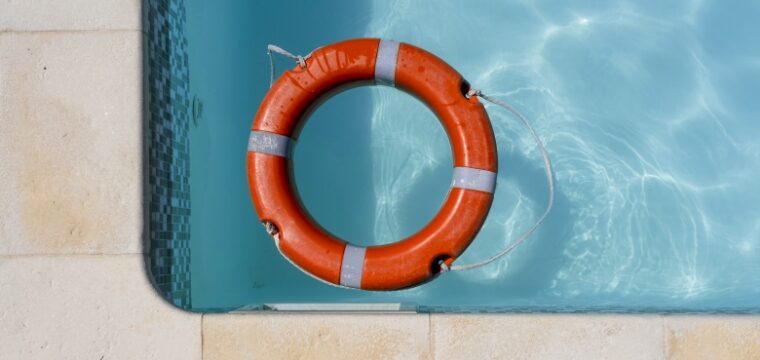Summer means sunny days spent around a swimming pool, whether it is local or private. While pool parties are fun, they may take a dangerous turn — pool accidents may result in accidents with broken bones, brain injuries or even death. When you experience a slip & fall injury at a pool, you may wonder if you have a viable personal injury case. On behalf of those looking to start a case, here are the basics of premises liability and how it impacts a potential swimming pool lawsuit.
Static vs. Transitory Conditions
Homeowners and business owners have a responsibility to not commit negligence. However, the property owner is not an absolute insurer. This means a pool owner is not immediately responsible for injuries under all conditions. For a property owner to be held responsible for your injury, a dangerous condition must first be present. Dangerous conditions exist in two forms — static and transitory.
Static conditions are unchanging, fixed conditions. For example, a slippery material installed around a pool is a permanent condition that may cause someone to fall. Static conditions are typically easier to prove in a swimming pool lawsuit, as there is an opportunity to revisit the scene and analyze the condition. On the other hand, transitory conditions are conditions that may come and go. For example, water on a deck appears in an instant and could cause someone to slip and fall. Transitory conditions may be more difficult to prove legally, as they may be cleaned up or changed after the accident.
Responsibility in a Swimming Pool Lawsuit
Once you have determined that a dangerous condition was present, you must identify who is at fault. Business owners and homeowners have the same level of legal responsibility to act as an ordinarily careful person, but specific expectations vary depending on what they are using their pool for. In the case of a homeowner, they must simply act as an ordinarily careful homeowner would. However, in the case of a business owner, they must act in a way that an ordinarily careful business owner would — meaning they must make considerations for the safety of their customers.
Businesses Owners
When a pool is being used for profit or service, such as being a public swimming pool, there is a higher expectation for their conduct. Businesses must remain hyper-vigilant of potential harm to ensure safe swimming conditions and protect themselves from legal action. Business owners have a responsibility under law to:
- Not have hazards present
- Look for and discover hazards as they appear
- Remove, warn of or barricade hazards
- Homeowners
The standard expected of homeowners is a bit less stringent. In a swimming pool lawsuit, homeowners fall under the “open and obvious” rule. The homeowner is not liable to a victim if the danger that existed on their property was openly apparent and obvious to a reasonable person. For example, consider a wet rubber pool float left on the deck. An argument may be made that the homeowner is not responsible for the injuries suffered by the person who slipped. A reasonable person would have seen the condition, realized the danger posed and stepped around the float.
It is also important to consider that safety requirements may differ by city or county ordinance. St. Louis County homeowners must have fences around their pool, and many areas require the installation of water hazard entrance alarms. When pursuing your swimming pool lawsuit, consult with an attorney to verify which regulations apply to your case.
Common Pool Hazards
Open water is dangerous — there is always the possibility of people unintentionally drowning or getting hurt. Pool owners have a responsibility to warn of or protect from these harms, but the standard of duty differs by their designation. Common hazards involved in a swimming pool lawsuit include shallow water, slippery surfaces and the possibility of drowning.
Property owners mitigate risk by using common safety remedies. Property owners may install slip-resistant surfaces, mark the depth of their pools and remove excess toys from around the pool. Business owners may protect against known dangers by having lifeguards present and signs posted about dangerous conditions. Common safety signs include:
- “Swim at Your Own Risk”
- “Warning: No Lifeguard Present”
- “No Running”
- “No Diving”
Start Your Swimming Pool Lawsuit
Premises liability is full of nuances that may be difficult to navigate on your own. The personal injury attorneys at Casey, Devoti & Brockland are ready to stand at your side in your time of need. For more information about your swimming pool lawsuit, contact our attorneys for a free consultation.









